It is clear that our Krav Maga school has some substantial differences from the multitude of standard courses that are now widely available. In fact, it immediately stands out that during our training we do some specific preparatory exercises that may seem taken from programs of competitive preparations of some combat sports… and in fact it’s just like that. For example, it is usual for our instructors and best athletes to train in the ring rather than in the cage, with mouthguard and gloves. If a snapshot was taken at this moment, it would seem to witness an athlete’s competitive preparation for an upcoming boxing match, rather than a Kick Boxing or MMA competition. Leaving aside the fact that some students actually participate in such competitions, the question that spontaneously arises in someone is: “Why, in a self defence course, where the aim should be to acquire necessary skills to defend yourself in the streets or in a context that is completely different from the MMA cage or ring, are practiced specific exercises for combat sports?” Below we will go into some fundamental aspects about the correlation between Krav Maga, Martial Arts, Combat Sport and we will answer the most frequently asked questions.
Let’s start with perhaps the most relevant question:
“Why do you claim it’s vital to practice boxing and fighting?”
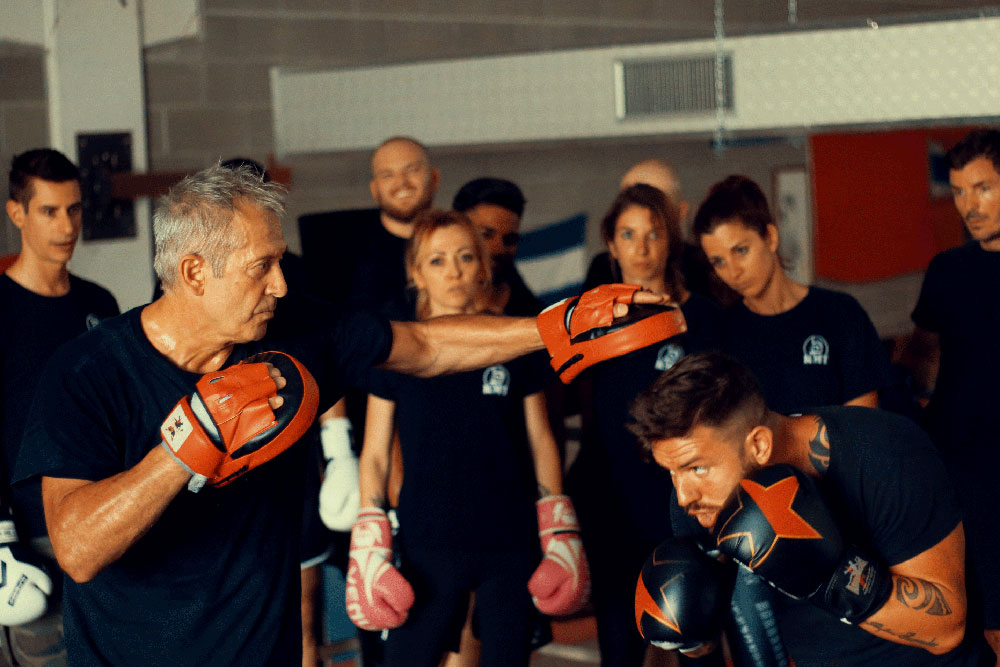
Hollywood movies have misdirected viewers’ perception of what is possible in reality and what is not. At the beginning Bruce Lee‘s movies (and later all his successors belonging to the world of oriental Martial Arts) showed scenarios in which the martial artist defeated a dozen of adversaries at the same time, starting from an initial situation in which, among other things, he was even surrounded. Then came the time for movies with more realistic close combat scenes and also techniques taken from Krav Maga, in which, however, to make the choreography more engaging, the ‘incredible’ abilities of the protagonists were exasperated. But, as mentioned, it’s just about choreographies. The problem is that movies have deceived both the ‘profane’ and, even worse, the martial arts practitioners: there is a widespread belief that the limits of man’s fighting skills are far beyond reality, or that there are ‘tricks’ to easily win without having much experience (this is perhaps possible but, similarly, only against an opponent who does not have much experience). Especially, the most serious mistake is to believe that for every situation there is a solution that will always work and that such solutions are applicable as mathematical formulas, that is to think that if I am in the situation ‘A’ I apply the technique ‘A’, if I am in the condition ‘B’ I apply the technique ‘B’, etc, and that everything always goes smoothly. This is absolutely not so: often the opponent (the aggressor) has an unexpected reaction, especially if he is not a fool (because, otherwise, a single strike is enough to knock him out) but a person who over time has acquired skills or experience (for example, having been involved in fights, brawls or aggressions where he could have experienced how to face a confrontation in reality). In that case, individual combat skills will play a predominant role in increasing the possibility of overwhelming the attacker and for this reason it is of fundamental importance to structure the training in different sections, including sparring.
“There are simple techniques that allow you to neutralize your opponent in a second, why do you also explain advanced techniques that present a certain degree of difficulty and require more time to be assimilated?”
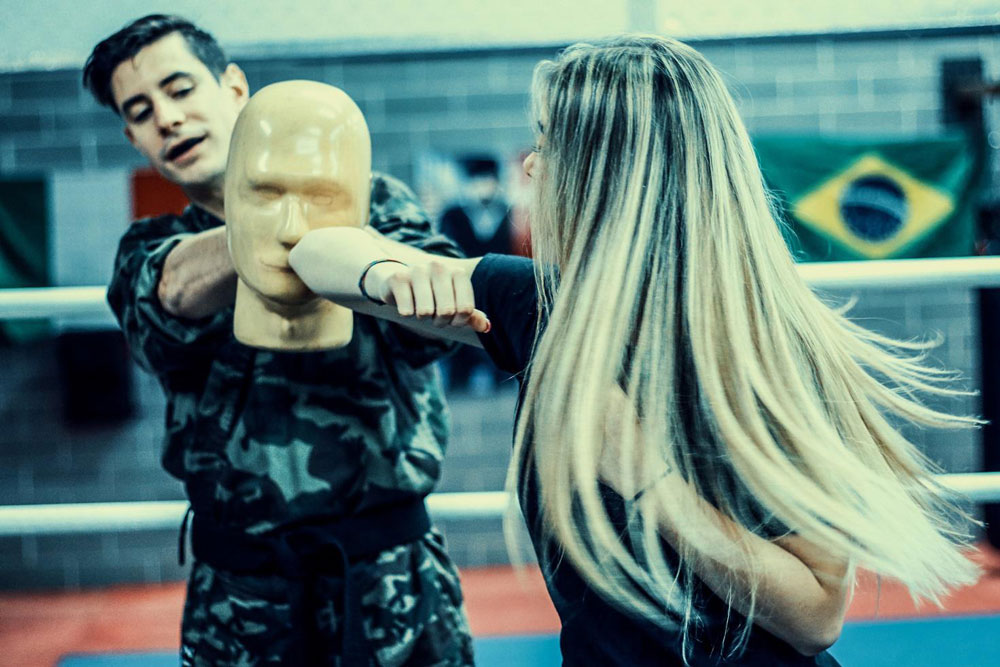
We do not explain complicated techniques to complicate life, the problem is that the ‘technique by the book’ will not always work, for the reasons expressed in the previous paragraph. Then you have to know how to manage the next phase in which the conflict assumes features more similar to a fight, especially if the aggressor is able to fight. It is obvious that, ideally, the best solution is to neutralize the attacker as quickly and effortlessly as possible. It is desirable to manage the physical confrontation by promptly ending it with a quick direct strike to the face, with the open hand in order not to hurt the knuckles, the phalanges or the metacarpal bones, or by aiming at the genitals with a regular kick. But these strikes will not always be successful, due to the rush of movements and the randomness of real situations (as well as, especially, the potential fighting skills of the attacker). Therefore, if you really want to be able to defend yourself no matter who the attacker is, you need to have an extensive knowledge of all the basic combat techniques. Among other things, Krav Maga is a combat method synthesized by the main Martial Arts, and then deepening their knowledge will surely acquire a greater mastery of Krav Maga techniques.
“How can it be useful, in a course of Krav Maga, deepening the knowledge of techniques and principles taken from combat sports and doing rounds of sparring in the ring?”
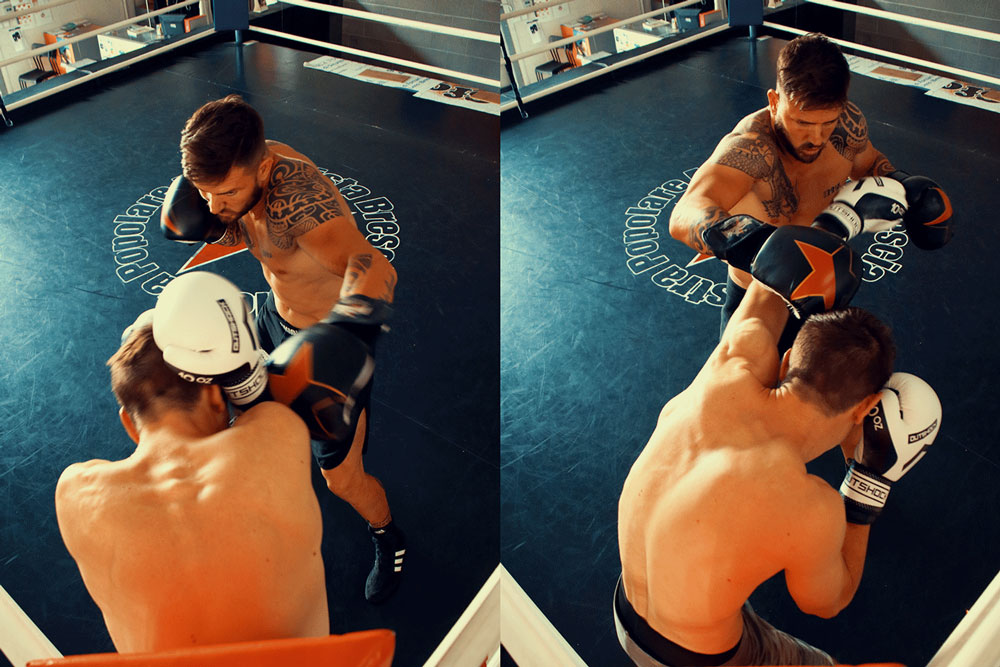
Returning to the origins of Krav Maga, the founder Imre Emerich Lichtenfeld, also known as ‘Imi’, was a great athlete who achieved excellent results both in the boxing ring (he won the title of International Boxing Champion) and on the tatami of wrestling (he became Czechoslovakia national wrestling champion in the youth sector). He also deepened his knowledge of martial arts such as judo and jujitsu. It was precisely by building on these experiences that he was able to synthesize the Krav Maga combat system (which literally means ‘close combat’) that we practice today. It is logical, however, that if you know how to punch according to boxing principles you will also be able to throw a tremendous KO palm-strike, because after all what is important is the correct synergistic movement of the entire body, no matter if the fingers are closed in a fist or open. Conversely, a palm-strike thrown by only the arm strength will be ineffective and will not have the desired effect (which can cause a serious problem). In addition, training in combat rounds, for example according to Kick Boxing or MMA rules, increases the athlete’s specific co-ordination skills, including above all:
- Eye–hand co-ordination
- Reaction ability
- Transformation ability
These skills are very important because they engage the brain in rapid analysis of external stimuli to develop appropriate motor responses. In a fight you don’t know what are the attacks that the opponent plans to throw, so you need to possess good reflexes to recognize the type of movement in progress, to implement a corresponding counter-move ( to dodge, parry, counterattack, etc). Without ever doing sparring, these abilities remain latent, and this will cause the failure of the attempt to defend yourself from random attacks (punches, kicks, etc.). These aspects have been covered more in detail in this article.
In addition to the above reasons, which are already more than enough, we add that sparring is also an excellent exercise under stress, in a context of physical and psychological pressure. There are various methods to recreate in the gym a scenario of adrenaline and psychological subjection (typical of real aggressions in the street); to simulate breathlessness, in your opinion, is it a more realistic simulation doing push ups on the ground until exhaustion or making a round where there is an opponent willing to beat you and that strikes you and until exhaustion?
“Does it make sense to apply the competitive preparation of a sport in a Krav Maga course?”
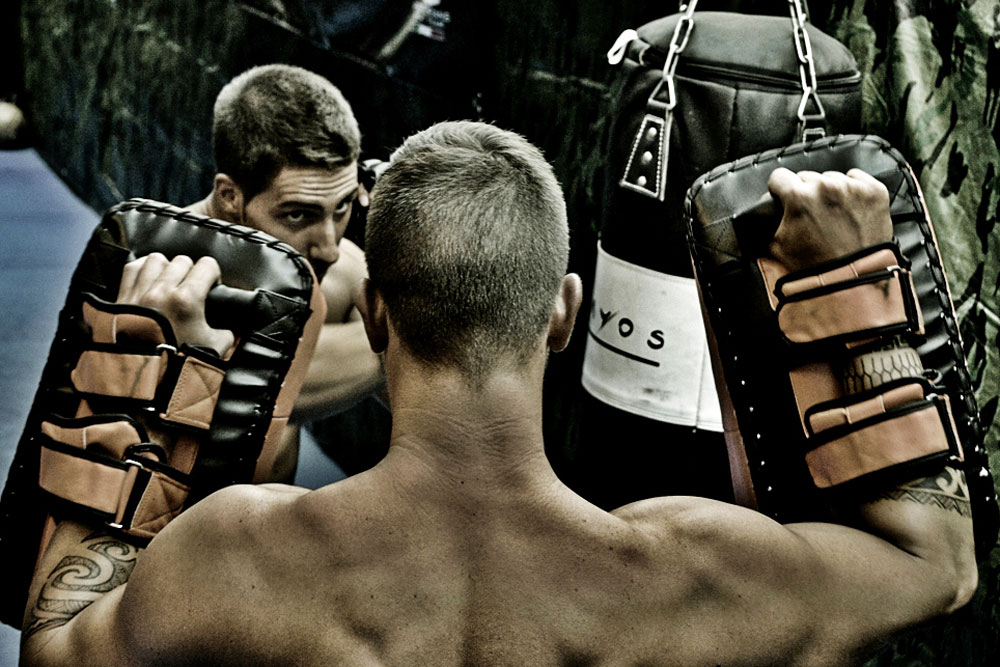
The answer is simple and equally logical, in fact the greater the personal skills acquired by the student, the greater his chances of defending himself and returning home safe and sound, following an attempt at aggression. The purpose of the competitive preparation is to increase athletic skills of the individual such as strength, endurance, speed, etc, which obviously are an advantage not only during a match in the ring, but also in the field of self defense. We can say that they are generic skills that facilitate the execution of any movement and technique, including those of Krav Maga of course. Furthermore, competitive preparation improves co-ordination and stimulates reflexes, attributes necessary in cases where the aggressor has fighting skills or following an imperfect application of a technique, unexpected event from which a real fight inevitably arises. In this case other ‘pre-packaged’ techniques cannot be performed, but rather could be applied some automatisms matured during a lot of practice in training and in sparring.
“In Krav Maga there is no ground combat; ground combat is Brazilian Ju Jitsu. Why do you teach fighting techniques on the ground?”
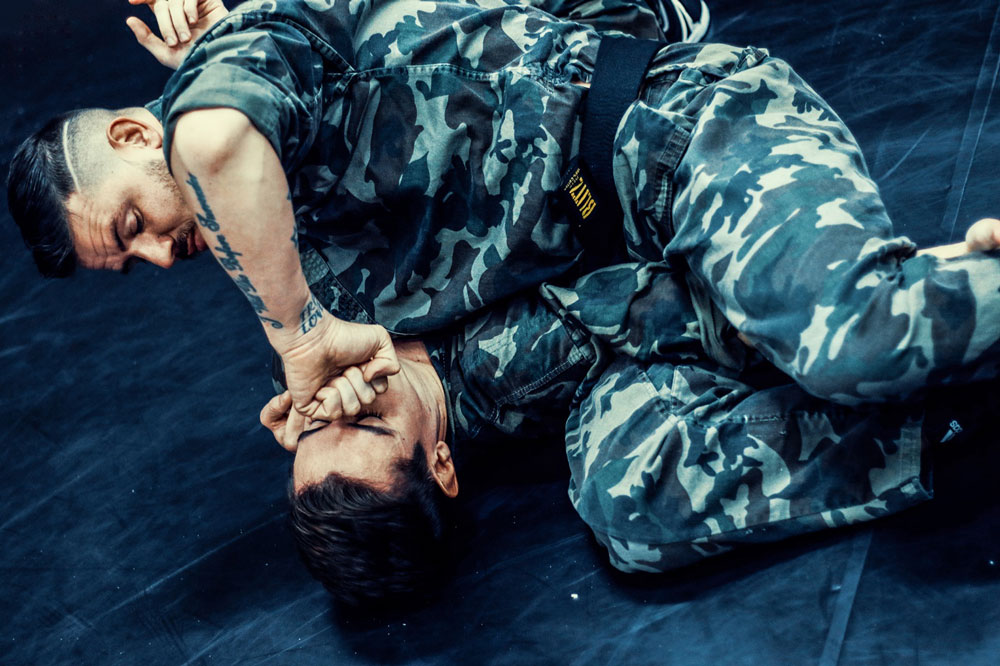
First of all, it is absolutely not true that in Krav Maga there are no techniques on the ground, and those who say so betray their ignorance on this topic; we advise them to urgently attend a refresher course specific to this theme. As for why we practice so much of it, the reason is simple: if someone is able to bring you to the ground, fighting or worse by hitting and/or injuring you, what will you do next? Those who practice Krav Maga know well that on the street you must not stay on the ground because in that position you are more vulnerable, especially in a hostile or crowded environment, and you can’t defend yourself from any other attacker who may come. However, this does not mean that an attacker who instead practices MMA or wrestling or Brazilian Ju Jitsu (nowadays widely used disciplines) might not want to take you to the ground, simply because he was taught to do so. Usually, by the way, between two fighters the less good at boxing tries to close the distance to avoid receiving too many punches (or kicks) rather continuing the fight on the ground. In this case, you need to be able to overcome him to free yourself from his “trap” and stand up as quickly as possible. You absolutely must not remain entwined, wrapped and blocked for two minutes on the asphalt.
“Why do you teach how to throw high kicks?
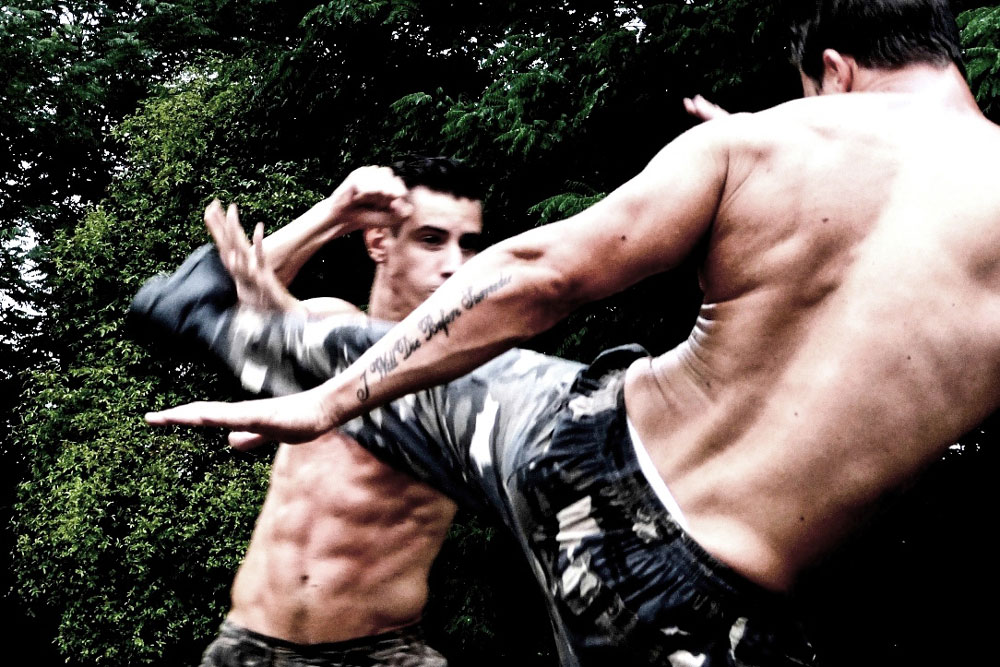
In Krav Maga, you are taught to avoid kicking high, mainly for four reasons:
- Daily wear, especially winter coats or evening dresses, may not provide the comfort and agility needed to throw a high kick. Clothes can physically be a real constraint that limits the range of movements.
- Not everyone has the muscular elasticity needed to throw a high kick, without first having warmed up and done stretching. To tell the truth, for most people, even for the most athletic ones, suddenly performing such an explosive stretching motion may be the best way to get a muscle tear, with the logical consequences (even more serious if it happens during a street brawl).
- Furthermore, throwing a high kick is a motion that requires good specific motor co-ordination, which is much more complex than throwing a punch, and also generates instability because you remain resting on one leg.Although you have a good balance, co-ordination and technique, if someone simply pushes you while you’re throwing a phenomenal high kick… you’ll fall to the ground ruinously.
- Finally, a punch takes less time (and energy) to get to the face than a high kick. The distance between the attacker’s head and your hands is about half than the distance to your feet.
But combat sports such as Kick Boxing or Muay Thai are widespread, and for those who practice these disciplines it is normal to kick high, simply because they have been taught to do so. On the web, for example on YouTube, you can find countless real videos in which KO were filmed on the street with high kicks to the head.
Just as in crime movies it is rhetorically said that to take a criminal you have to think like a criminal, so if you want to be able to parry a high kick you also have to know how to throw it. If you know it you can recognize the movement sufficiently in advance, without being unprepared with the guard lowered, thinking that the kick was directed to the ribs or legs. If you know how to throw a spinning back heel kick, or a 360 tornado kick, and if you have already experienced that someone had tried to hit you with these kicks in the gym (after warm up and stretching, of course), you will be able to recognize these movements in case of need, because you have developed a good complex reaction capacity thanks to which you can, for example, grab the attacker’s leg and smash him on the ground, rather than hit him directly in the back while he’s rotating the body.
“Why do you throw punches with your closed bare hands?”
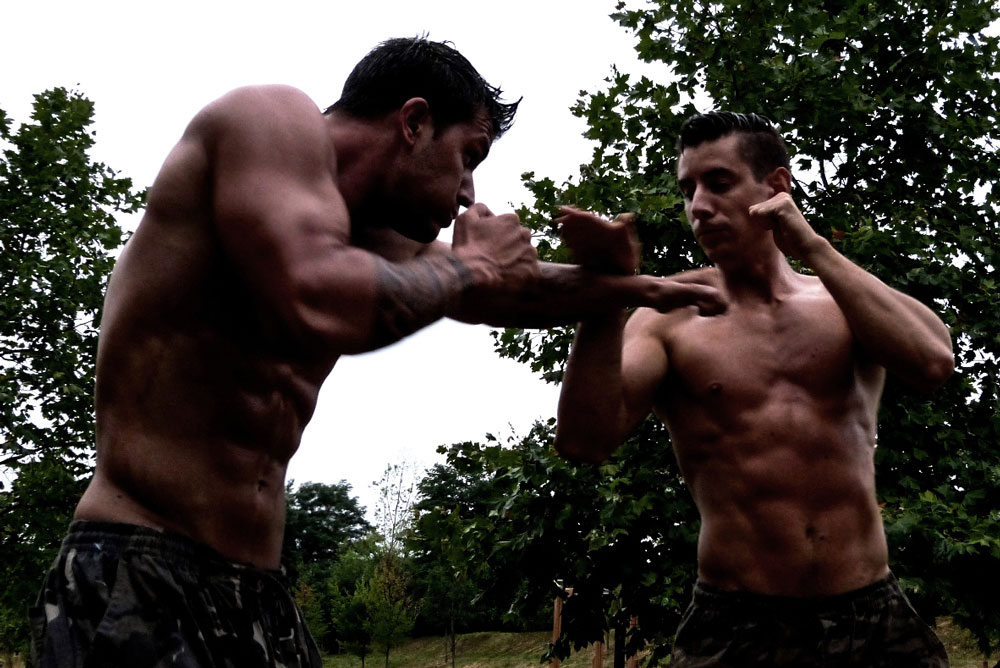
When you are in face-to-face contact with the attacker, if he is exactly in front of you, you must hit his face with your hands open (palm strike); otherwise you can cut the knuckles against his teeth (which is quite likely) and generate infections or transmission of diseases. Quite common among novices is also the fracture of the fourth or fifth metacarpal bone due to an imprecise impact. Given that hitting with the open hand is generally more prudent, however, in certain situations it is more convenient to close the hand in a fist: for example, if as a result of a scuffle you are in a diagonal position or sideways to the aggressor, then you can safely choose to throw a punch, which certainly hurts more (and causes a greater shock) and with which it is easier to KO the villain. Hitting the attacker with a punch at the mandible, near the chin, from the lateral position, causes it to break and an instant KO; this is extremely useful during disarms.
“In the demonstrations the opponent remains motionless, while in reality he could react”
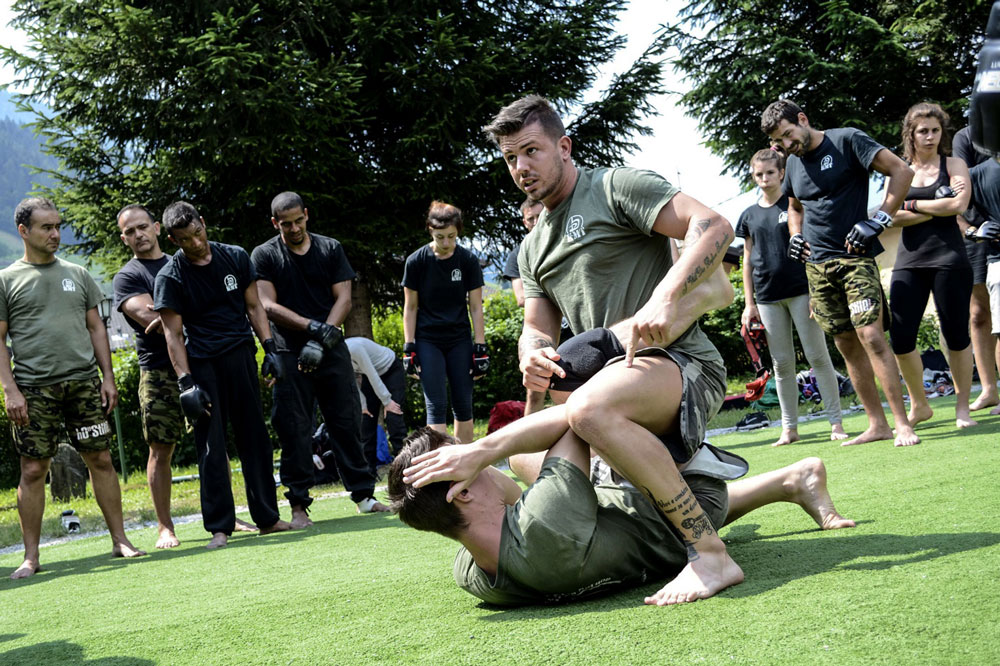
During an explanation it is obvious that while the instructor explains who interprets the aggressor remains stationary, because otherwise it would not be possible to explain in detail and correctly the technique, which requires a certain amount of time (and not a few tenths of a second), nor would the students learn and understand what is happening. After that, of course, you can (and should) try to apply the technique with an increasingly less collaborative opponent, in proportion to the student’s level of experience. Indeed, performing a technique against an opponent who is totally uncooperative, can be a test to evaluate the effectiveness of the technique itself, provided that the experience of those who perform it is enough to guarantee a perfect application in every detail.
Luca Arietti
KMT Instructor

